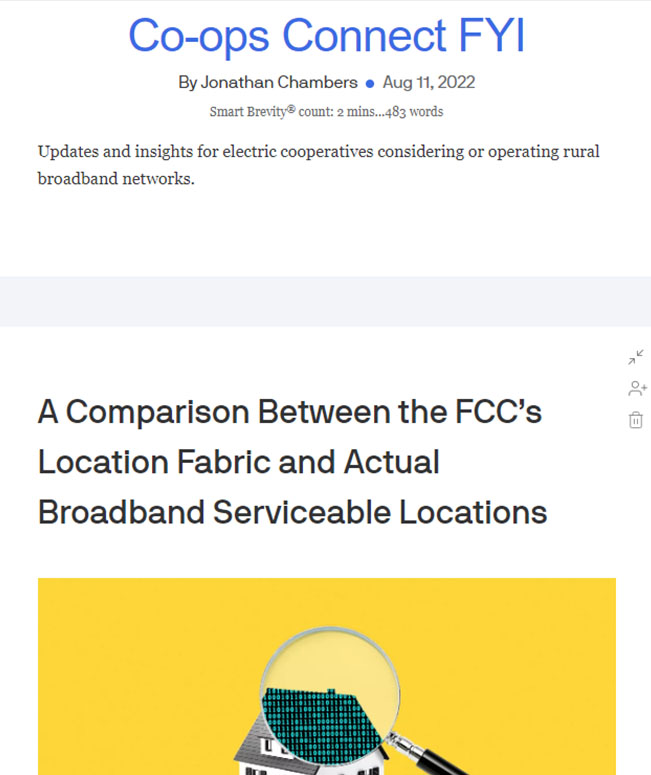A Comparison Between the FCC’s Location Fabric and Actual Broadband Serviceable Locations
August 12, 2022
(Images provided through download)
As described last week, the FCC is creating a new national broadband map intended to reflect the service availability by speed and technology type at every serviceable location in the country.
• As a preliminary step, the FCC has contracted with CostQuest to create a broadband serviceable location fabric (the Fabric).
• CostQuest is a first-rate organization of industry professionals. I believe the work they have undertaken on behalf of the FCC is simply impossible.
• The Fabric is a dataset that includes all locations in the United States and U.S. Territories where fixed broadband internet access service has been or could be installed.
Below is a sample of data from the Fabric compared to actual locations where we have designed and are constructing fiber optic networks.
• Each Fabric location is centered on a rooftop (orange).
• Each Network Interface Device (NID) to connect the fiber to the premises is shown at its actual location at the side of the house (blue).
In this example, there is a very close correlation between the Fabric and the actual location of the NIDs. The imagery of this area is shown below.
The next example shows a similar area, but one in which the Fabric misses some of the locations built with a fiber network.
• Again, there is a close correlation.
• Yes, but: In this case, the Fabric undercounts the actual broadband serviceable locations by over 20%.
In this third example, the Fabric simply misses the entirety of a new subdivision. Below are electric meter locations with no corresponding points on the Fabric.
Finally, we thought we would look at an example from a farm, which often has multiple structures and where increasingly the demands of precision agriculture require multiple places for connectivity.
• Again, the orange dots display the Fabric’s determination of serviceable locations, centered on rooftops. The blue dots display actual electric meter locations.
The Big Picture
The point of this exercise is not to criticize the Fabric, but to understand where there may be shortcomings so that the shortcomings can be remedied.
• In nearly every case where we have compared the Fabric with actual fiber network design and construction, the Fabric contains fewer locations than actual serviceable locations.
• In addition to missing certain locations, the Fabric erroneously excludes certain types of businesses.
The bottom line:
In total, we believe the Fabric undercounts broadband serviceable locations in rural areas by more than 10%.
It will not be possible to remedy the undercount by adjudicating every one of millions of individual locations.
Next week, I’ll show examples of a second problem with the new FCC maps: a new way the FCC is allowing DSL, fixed wireless and cable to overstate their internet access speeds.
